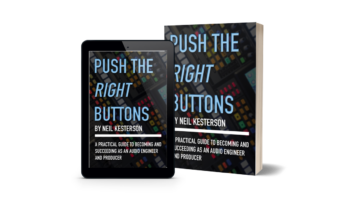Perhaps one of the most difficult tasks I experienced as a chief engineer was trying to explain to my manager that the interference to our FM signal during morning drive was not our antenna or the transmitter, but rather tropospheric ducting.
There were times I know he thought I was making this up, trying to cover for some problem at the transmitter site! Perhaps you’ve experienced this frustration.
If so, enter the Internet and a tool that can’t be doubted.
Cox Richmond Engineering Manager Jon Bennett sends a link to William Hepburn’s Worldwide Tropospheric Ducting Forecast site. This site displays six-day forecasts, in map form, showing the degrees of tropospheric interference for the entire world. Although the current week’s maps cannot be copied or published, you can certainly look at them and predict how bad the ducting will be.
(click thumbnail)Fig. 1: Worldwide Tropospheric Ducting ForecastVisit www.dxinfocentre.com/tropo.html.
In addition to the maps, there are several tutorials on the site that help explain this phenomenon. One is the Hepburn Tropo Index, which was developed by Hepburn, which displays the degree of tropospheric bending expected to occur over a particular area. This index gives an indication of how much signal bending is taking place overhead, and can help explain why your morning show can’t be heard 5 miles from the transmitter site.
Most engineers are aware of this atmospheric phenomenon, but now there is scientific forecasting to back up the interference that seems to plague us this time of year. Thanks to frequent Workbench contributor, Jon Bennett for sharing the site.
* * *
Speaking of the Internet, another frequent contributor, Paul Sagi, writes from Kuala Lumpur that he’s found the Internet to be a useful tool as a broadcast engineer — especially when it comes to computers.
Even if the station has an IT professional, it’s job security to understand broadband, virtual private networks (VPN) and even the TCP/IP and LAN settings for a station PCs and network.
Certainly you can pay for computer courses, but you can also find useful information on the International Engineering Consortium’s Web site found at www.iec.org/online/tutorials.
The registration is free and required to download some of the material. You can view the table of contents without registration.
Some recent white paper topics include “The Evolution of Networks Beyond IP,” and a neat tutorial on Fiber Optic Technology, prepared by Corning. Every engineer should have a basic understanding of the concepts and terminology of their IT plant, if for no other reason than to be able to deal intelligently with in-house computer staff and vendors during fault resolution and upgrades.
Head to the site, you’ll find it useful reading. Thanks to Paul Sagi for the tip.
* * *
Our computer theme continues with Larry Langford of WGTO(AM) in Cassopolis, Mich.
Larry writes with information on a poor man’s STL/remote audio system that really sounds good and is cheap. If engineers are expected to do more with less, this tip might help you out in a pinch.
Readers may have heard of GoToMyPC.com, which allows remote operation of any PC via DSL or other high-speed service. The latest version uses a sound feature that monitors any sound card or USB audio device in the host computer.
If you have a PC at your transmitter with GoToMyPC on it, you can access it from anywhere and then operate through the transmitter computer to again use GoToMyPC to access any computer anywhere that has audio on a sound card.
This could be an office PC at the studio that has program audio on it for an emergency STL, or it could be used to put audio on the air from even a laptop. As a sports remote feature, you would access a laptop at the remote that has an air card or DSL connection. Once the mics are plugged into the laptop, the audio would be available via GoToMyPC back at the studio.
The solution is great because the sending computer does not have to be set up to stream or do anything other than operate normally. The program will pick from any number of sounds cards or sources on the host computer, and there are two levels of quality to account for bandwidth conditions.
Latency is typically no more than a half second and the audio is reasonably flat but does show some rolloff at the bottom end.
The other major remote software, LogMeIn, does not do audio but Larry imagines it may in an upcoming version.
GoToMyPC charges for the number of host computers on line at any one time. The plans start at $19.95 a month. This is cheap insurance. Larry has used the program at WGTO to back up the STL feed or monitor the program channel from hundreds of miles away, without dedicated streaming.
He’s even remotely operated the production computer and edited spots using the program to hear the audition output sound card! This is a nice way to play a spot for a client if you are at their offices — you can gain access to any audio file back at the studio for audition in real time.
A neat twist on a new technology.
* * *
(click thumbnail)Fig. 2: Oh, there it is! Shine a flashlight parallel to the floor to locate dropped hardware.Dropping hardware or small parts can be an everyday occurrence for engineers, and a frustrating one at that. Fig. 2 shows a simple, effective way to locate the dropped items.
Get down on the floor with a flashlight, holding the flashlight against the floor’s surface. Shine the beam parallel to the floor’s surface and slowly move the flashlight from side to side, illuminating the floor. The dropped item will usually be apparent, as seen with the dropped nut in Fig. 2.
* * *
Are you budgeting to replace your AM ground system next year? Here’s something to consider as you plan.
Nott Ltd. of Farmington, N.M., has been approved by Copperweld Bimetallics LLC, to distribute the Copperweld brand of grounding wire.
This wire has been used in the electric utility industry for many years and just now comes to broadcasting.
Standard Copperweld wire is not annealed, making it springy to deal with. However, this ground wire is soft drawn and handles and bends just like pure copper. It can also be silver soldered like pure copper.
Tests indicate that erosion may occur at the ends of buried wires, but go no more than two wire diameters into the metal. In the case of #10 wire, this is less than 1/4-inch.
We’ve seen the tremendous rise in the price of copper. A few years ago, it was about 65 cents a pound, and took a leap last year to more than $4; the price has now stabilized somewhere above $3/pound, with the price changing daily. The increased worldwide demand demonstrates the price won’t be coming down any time soon.
The rise in pricing also means than copper thieves are looking for copper in all forms including AM ground systems. The folks at Copperweld Bimetallics say that many copper thieves now carry magnets with them, so when they put the magnet onto your radial wire if it sticks, they won’t bother it.
If the Copperweld is stolen, the first time thieves try to sell it as copper scrap, the dealer will turn them down because it’s mostly steel, which has little scrap value. Recall that RF current travels only on the outer surface of a wire, due to skin effect, so most of your current will be flowing in the outer copper skin. Bending the wire into a sharp radius does not cause the copper skin to crack. Wrap it as tight as you like, then silver solder it.
For information, contact Nott Ltd. at (800) 443-0966 or (505) 327-5646.














